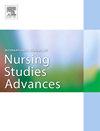How does family resilience develop among stroke survivors and their caregivers? A mixed-method study using a chain mediating model
IF 3.1
Q1 NURSING
International Journal of Nursing Studies Advances
Pub Date : 2024-09-22
DOI:10.1016/j.ijnsa.2024.100246
引用次数: 0
Abstract
Background
Walsh's family resilience theory indicated that families could foster resilient outcomes among their members when they are facing changes or crises. However, little is known about family resilience among Chinese stroke survivors and their caregivers.
Objectives
To explore the direct and indirect relationships between the family resilience of stroke survivors, perceived social support, self-perceived burden, self-efficacy, and the burden on their principal caregivers, and to examine the journey of adapting to family resilience among stroke survivors.
Design
An explanatory sequential mixed-method study.
Methods
A quantitative assessment of perceived social support, self-perceived burden, self-efficacy, and family resilience was conducted among a cohort of stroke survivors. For a deeper understanding of the family resilience formation process, semi-structured, in-depth interviews were undertaken with a purposefully selected subset of participants, consisting of 15 stroke survivors and their principal caregivers who met the study criteria. Data analysis encompassed descriptive statistics, mediation models, and content analysis to integrate and interpret both quantitative and qualitative data.
Results
In a comprehensive hospital in Guangdong Province, China, 379 participants—229 men (60.4%) and 150 women (39.6%)—completed a cross-sectional questionnaire survey. The quantitative phase revealed significant statistical differences (p < 0.05) in total family resilience scores among stroke survivors related to various factors, such as age, marital status, educational level, occupational status, average monthly income per capita, first-time onset, and types of stroke. Self-perceived burden and self-efficacy partially mediate the relationship between perceived social support and family resilience, contributing to a sequential chain-mediated effect. During the qualitative phase, in-depth interviews revealed a progressive trajectory from the initial shock of diagnosis through the ongoing presence of stress and challenges to the ultimate development of family resilience and an adaptive perspective toward the future.
Conclusions
Exploring the factors influencing family resilience in stroke survivors could assist healthcare professionals developing interventions to enhance family resilience and lessen the burden on principal caregivers from individual, family, and social perspectives.
中风幸存者及其照顾者的家庭复原力是如何形成的?采用链式中介模型的混合方法研究
背景沃尔什的家庭复原力理论指出,当家庭成员面临变化或危机时,家庭可以培养他们的复原力。目的探讨脑卒中幸存者的家庭复原力、感知的社会支持、自我感知负担、自我效能感和主要照顾者负担之间的直接和间接关系,并研究脑卒中幸存者适应家庭复原力的历程。方法 在一组中风幸存者中对感知到的社会支持、自我感知到的负担、自我效能和家庭复原力进行定量评估。为了更深入地了解家庭复原力的形成过程,我们特意挑选了 15 名符合研究标准的中风幸存者及其主要照顾者,对他们进行了半结构化的深入访谈。数据分析包括描述性统计、中介模型和内容分析,以整合和解释定量和定性数据。结果 在中国广东省的一家综合医院,379 名参与者--229 名男性(60.4%)和 150 名女性(39.6%)--完成了横断面问卷调查。定量研究显示,脑卒中幸存者的家庭复原力总分与年龄、婚姻状况、受教育程度、职业状况、人均月收入、首次发病和脑卒中类型等不同因素有关,存在明显的统计学差异(P <0.05)。自我感觉的负担和自我效能感对感知到的社会支持和家庭复原力之间的关系起到了部分中介作用,从而产生了序列链中介效应。在定性阶段,深入访谈揭示了一个循序渐进的轨迹,从最初确诊时的震惊,到持续存在的压力和挑战,再到最终家庭复原力的发展和对未来的适应性观点。结论探索中风幸存者家庭复原力的影响因素有助于医疗专业人员制定干预措施,从个人、家庭和社会角度提高家庭复原力和减轻主要照顾者的负担。
本文章由计算机程序翻译,如有差异,请以英文原文为准。
求助全文
约1分钟内获得全文
求助全文
来源期刊

International Journal of Nursing Studies Advances
Nursing-General Nursing
CiteScore
5.80
自引率
0.00%
发文量
45
审稿时长
81 days
 求助内容:
求助内容: 应助结果提醒方式:
应助结果提醒方式:


